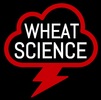Endothermic vs. ExothermicWatch the video below to gain an understanding of the meaning of endothermic and exothermic and how important it is to define the system when using these terms.
|
Reaction Energy DiagramsThe energy changes in chemical reactions can be represented by diagrams such as the one shown in the video below. The concepts discussed in the video are important to understand.
|
Energy CalculationsThe video below shows you how to calculate the amount of heat released or absorbed by a chemical reaction. This will not make much sense to you if you do not understand mole or stoichiometry concepts. You may want to check out those topics first and come back to this one if needed.
|
Practice
Quizlet quizlet.com/21961579/potential-energy-diagram-k-e-flash-cards/
Interpret Energy Diagram www.sciencegeek.net/Chemistry/taters/energydiagram.htm
Interpret Energy Diagram www.sciencegeek.net/Chemistry/taters/energydiagram.htm

